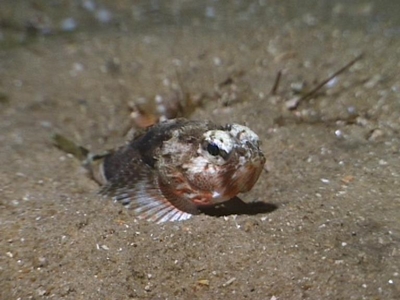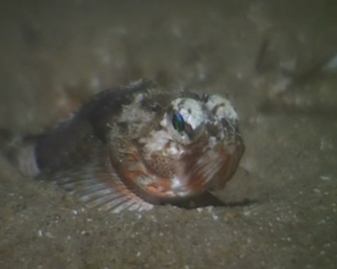General Description
Head and body robust with prominent spines on head, cheeks and gill covers. Pale brown or grey with darker patches and mottling above, white below. To 12 cm.
Biology
A nocturnal species, often buried in sand during the day and only occasionally seen by divers. It is common off Portsea and similar areas in Victoria, and taken as bycatch in commercial trawls. The venomous fin spines can inflict a painful sting.
Habitat
Shallow sandy and shelly bottoms, often near seagrass beds in bays and along the coast, in depths of 2-46 m.
Soft substrates
Distribution guide
Southern Australia.
Species Group
Depth
Shallow (1-30 m)
Deep ( > 30 m)
Water Column
Max Size
12 cm
Diet
Carnivore
Harmful
Venomous spines can inflict mild to severe pain.
Commercial Species
No
Global Dispersal
Native to Australia
Conservation Status
- DSE Advisory List : Not listed
- EPBC Act 1999 : Not listed
- IUCN Red List : Not listed







